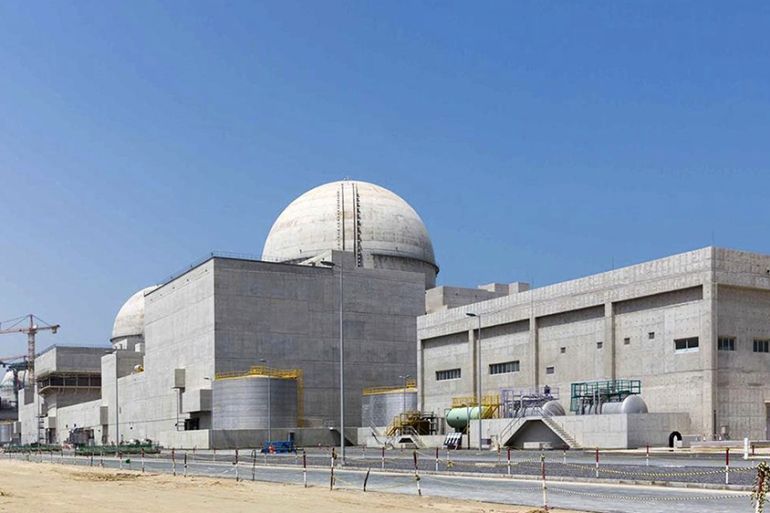UAE nuclear reactor one step closer to operation: WAM
Analysts have raised concerns over the safety of the nuclear facility and its potential to spawn a nuclear arms race.

The United Arab Emirates‘ delayed Barakah nuclear power plant is one step closer to coming online, after an operational readiness assessment confirmed the first of its four reactors is ready to start up, the UAE’s state-run Emirates News Agency (WAM) reported on Tuesday.
Barakah has been plagued by delays and elicited warnings from analysts who have raised concerns over the safety of the reactors’ design as well as the potential for the facility to spawn a nuclear arms race in the region.
Keep reading
list of 2 itemsQatar: UAE nuclear plant threat to Gulf stability, environment
The operational assessment of the reactor was reportedly performed by the World Association of Nuclear Operators (WANO) centre based in Atlanta in the United States.
The nuclear plant’s operator, Nawah Energy Company, is concluding the final requirements before “commencing the loading of the first fuel assemblies safely into Unit 1 of the Barakah plant, scheduled for first quarter of 2020,” WAM said.
Once the fuel assemblies are loaded into the reactor, Nawah will raise power generation levels over a number of months before commercial operations begin.
The UAE’s nuclear regulator was in the final stages of issuing a licence for Barakah’s first reactor, the Emirates Nuclear Energy Corporation said last month.
Originally due to open in 2017, Barakah – Arabic for “divine blessing” – is the first nuclear plant on the Arabian Peninsula. The first of its four 1,400-megawatt reactors has been completed.
The reactors are being built by Korea Electric Power Corporation (KEPCO) and have prompted concerns over the potential impact on the environment in the event of an accident or attack.
A recent report by Paul Dorfman, chair of the non-profit Nuclear Consulting Group, titled Gulf Nuclear Ambition: New Reactors in the United Arab Emirates, highlights myriad risks inherent in Barakah’s design, including a lack of “key improved safety design features” normally expected on new European reactors but missing from those built by KEPCO.
Such features include a so-called “core catcher” to prevent the nuclear reactor core from breaching the containment building in the event of a meltdown and other defences to guard against a significant radiation release in the event of an accident or deliberate attack on the facility.
Further compounding these omissions, says the report, is “the discovery of cracking in all 4 reactor containment buildings” and the installation of faulty valves – all of which cast doubt over the UAE’s ability to provide “adequate nuclear regulation”.
The UAE is the only country that has purchased a KEPCO reactor.
In March, Qatar‘s foreign affairs ministry reportedly sent a letter to the International Atomic Energy Agency saying that a radioactive plume from an accidental discharge could reach its capital, Doha, within five to 13 hours – and a radiation leak could devastate the Gulf’s water supply due to the region’s heavy reliance on desalination plants.
Qatar is currently the subject of an ongoing diplomatic, trade and transport blockade by the UAE, Saudi Arabia and Egypt over allegations that Doha supports “terrorism” and is too close to Iran. Qatar has rejected such claims.
The UAE insists its nuclear power programme is transparent, safe and only intended for civilian use.